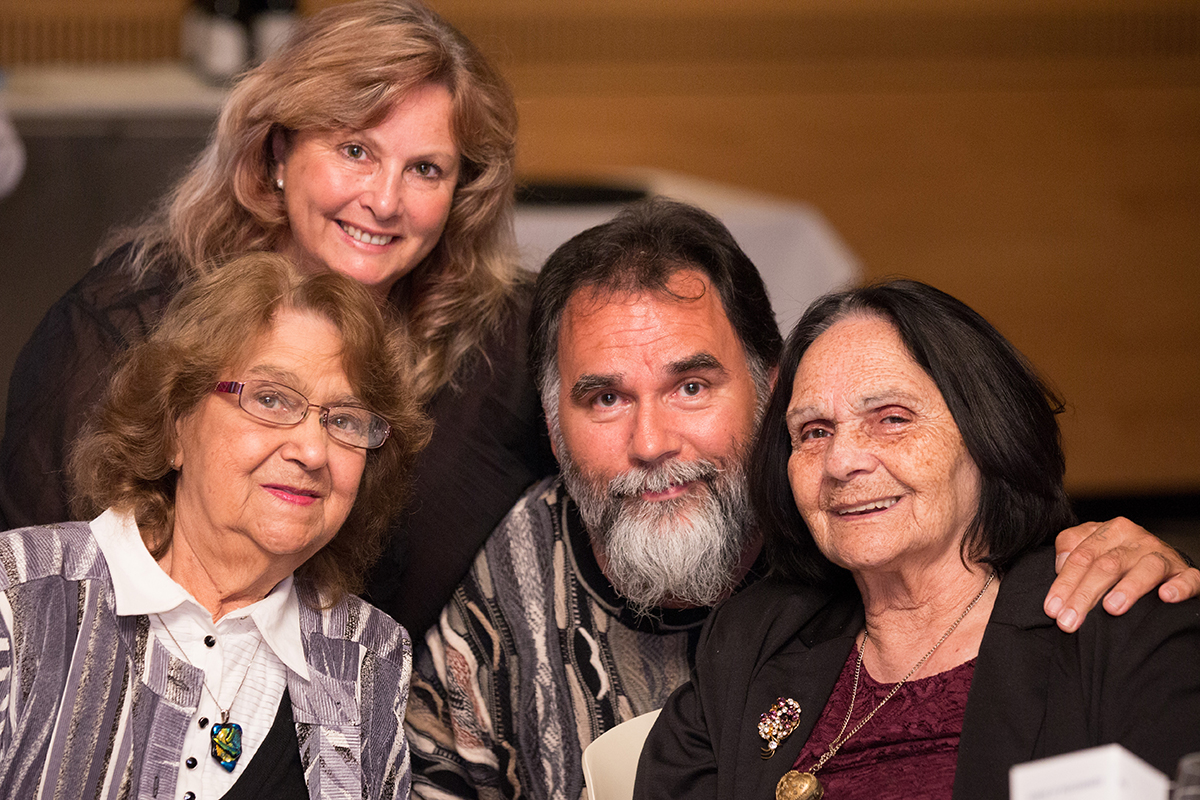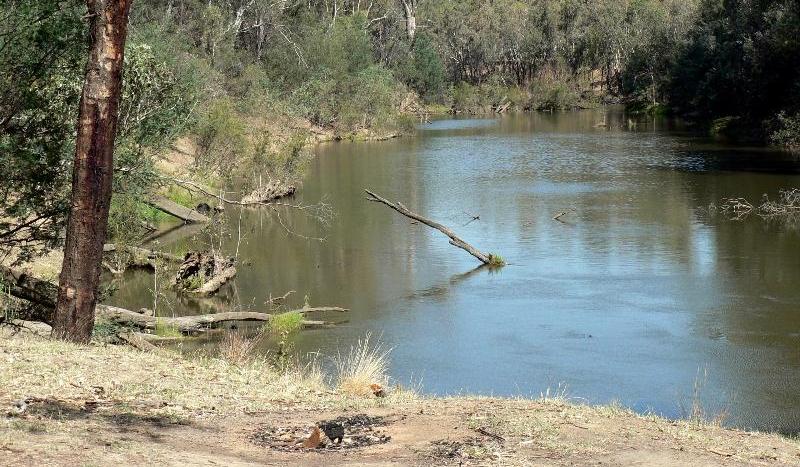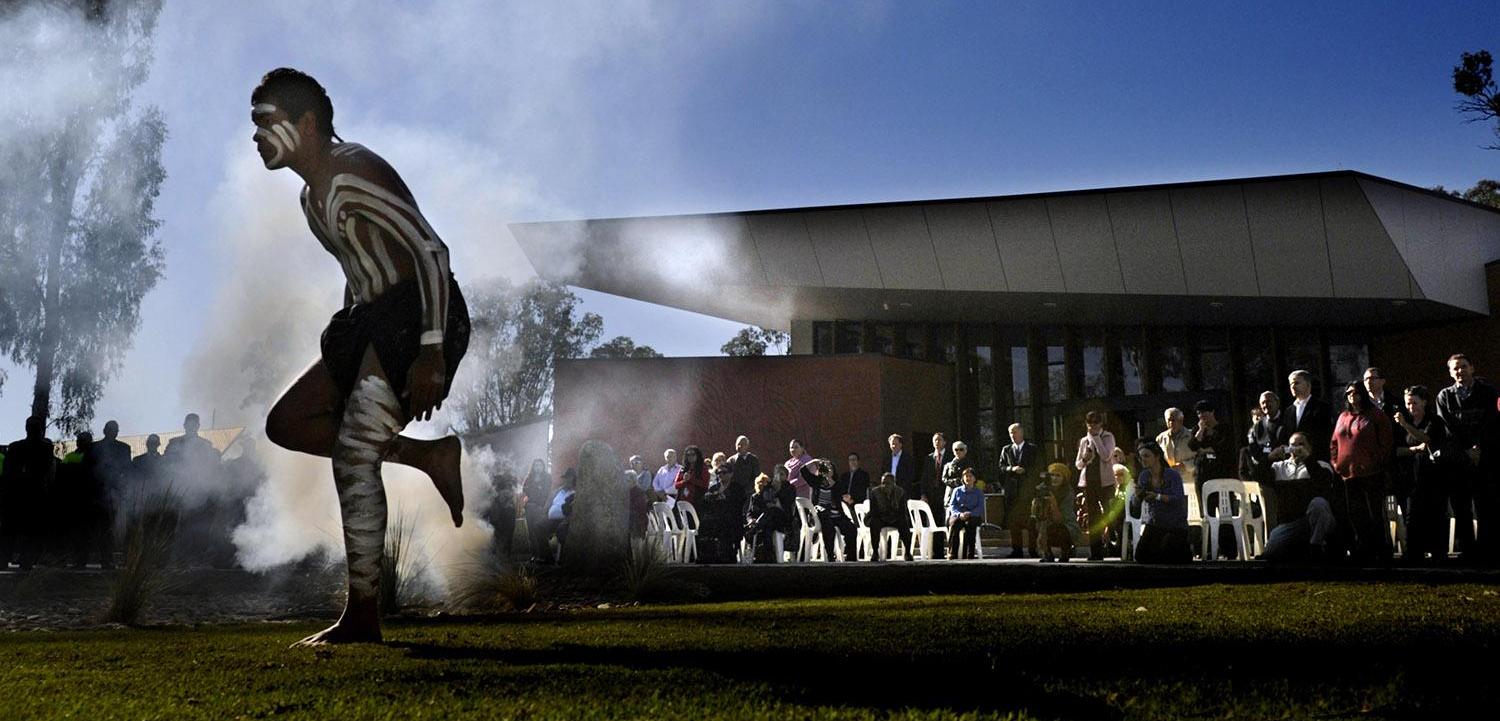Aunty Gwen Atkinson, a Gunaikurnai Elder, believed from a young age that anything was possible and set a plan for the type of life she wanted.
Born 1932. A determined Elder and dedicated community leader.

Aunty Gwen found this life with her late husband, Sandy, sharing a life journey of 63 years which sadly ended on 13 April 2016.
Not one to be deterred by obstacles, Aunty Gwen has been a quiet achiever, helping to establish health services for her community and achieve native title recognition for the Gunaikurnai people.
Despite whatever hardships are thrown in your path, you should never be afraid to be what you want to be.
The Early Years
Born at Lake Tyers, Aunty Gwen was the second youngest of 5 children born to Reg and Marjorie Thorpe (nee Green). Sadly, her mother passed away when Aunty Gwen was 2 years old. Aunty Gwen’s grandmothers helped Reg care for the children until his second marriage to Alice Pepper. Gwen has fond memories of the close community at Lake Tyers in the 1930s, where she gained a good educational foundation in her early years at the Lake Tyers School.
Aunty Gwen’s family moved to Melbourne during World War II. They lived in Collingwood and Reg worked at the Carlton and United Brewery. After the war, the family moved back to Gippsland, and Reg worked cutting sleepers. The family settled in Newmerella, 10 miles from Orbost. Although Reg encouraged Aunty Gwen to complete her schooling, she had other ideas. Aunty Gwen left school just before she reached the legal school leaving age of 14. She worked alongside her step-mother Alice picking peas and beans to supplement the family’s income.


A Long Successful Partnership
Aunty Gwen moved to Melbourne as a teenager, working for a while in the Eagley Mills in Collingwood. At 19, while working at St Andrews Hospital, she decided to travel to Shepparton to pick fruit. In Shepparton Aunty Gwen met John (Sandy) Atkinson (2012 Honour Roll inductee). Aunty Gwen and Sandy were married within 5 weeks. It was the beginning of a long successful partnership.
Aunty Gwen worked as a shearer’s cook at a sheep station at Wakool, NSW, while Sandy was a station hand. During their 9 years at Wakool, Aunty Gwen and Sandy’s 5 children were born. The family relocated to Swan Hill when Sandy had a job shearing at Moulamein station. During the week Aunty Gwen and the children stayed at Pental Island, on the Little Murray River. With no electricity or running water, Aunty Gwen used the river for washing purposes.
Aunty Gwen and Sandy moved to Mooroopna in 1963 and then, in 1965, settled in Tatura in a house that would remain the family’s permanent home. They soon became active in the local community, though Aunty Gwen’s first priority for 20 years was her children. Aware of her own limited access to secondary education, Aunty Gwen wanted to ensure her own children could easily get to school. Aunty Gwen joined the mothers’ club and did her share of canteen duty.


Aunty Gwen and Sandy moved to Mooroopna in 1963 and then, in 1965, settled in Tatura in a house that would remain the family’s permanent home. Aunty Gwen was dedicated to the Aboriginal health services offered in the Shepparton-Mooroopna district.
Establishment of the Goulburn Valley Aboriginal Health Service
In 1975 as momentum gathered for community-directed Aboriginal health services, Aunty Gwen and Sandy played a part in establishing the Goulburn Valley Aboriginal Health Service and an Aboriginal housing and welfare corporation. Together with Frances Mathyssen, Aunty Gwen was enlisted to do a pilot program to demonstrate that an Aboriginal Health Service in the Shepparton-Mooroopna district was necessary and workable. With few guidelines available, they did what was needed to get the health service underway. They visited Aboriginal families in the area to assess their needs and to encourage them to access health services. Aunty Gwen ferried community members to medical appointments, many of them in Melbourne. When Frances became unwell, Aunty Gwen continued on without pay for 3 months.
In 1978 the health and housing organisations amalgamated to become the Rumbalara Aboriginal Cooperative and Health Service. Aunty Gwen continued on as the Health Service administrator for the next 13 years. Her early reports on the service were used as examples for other regional Aboriginal health services. A study of Aboriginal children aged up to 5 in Shepparton, conducted with help from Rumbalara, led to the establishment in 1980 of the Victorian Working Party on Aboriginal Health, with Aunty Gwen and Sandy as Rumbalara representatives.
Aunty Gwen watched the health service grow as it built trust in community members and expanded its services. After retiring from active employment at Rumbalara, she continued as a Director for many years. Aunty Gwen was also on the Goulburn Valley Hospital Taskforce, which established the Minyah Barmah room for the use of community members who had family in hospital. Aunty Gwen has been a signatory to 4 consecutive agreements between Goulburn Valley Base Hospital and Rumbalara Aboriginal Health Cooperative to improve Aboriginal health in the region.


In 1978 the health and housing organisations amalgamated to become the Rumbalara Aboriginal Cooperative and Health Service. Aunty Gwen continued on as the Health Service administrator for the next 13 years.
Enduring community service
Aunty Gwen served on the Tatura Hospital Auxiliary Committee for many years and also worked at the Aborigines Advancement League’s Maloga Aged Care Hostel and Nursing Home in Nathalia, completing Certificates 3 and 4 in Aged Care. For three years she was a Councillor for the Aboriginal and Torres Strait Islander Commission.
Committed to giving back to her own Gunaikurnai people, Aunty Gwen was invited to become involved in the campaign to achieve native title over their country in Gippsland. Aunty Gwen remained dedicated to the campaign over 15 years, seeing the achievement of a Native Title Settlement in 2010 as the outcome of a group effort, rather than the work of 1 or 2 individuals. Aunty Gwen believes the Native Title Settlement provides opportunities to help current and future generations of Gunaikurnai. A signatory to the historic agreement as a Gunaikurnai Elder, Aunty Gwen continues to serve as Chair of the Gunaikurnai Land and Waters Aboriginal Corporation Elders’ Council.
In recent years Aunty Gwen has used the legacy of her grandfather, Corporal Henry (Harry) Thorpe, to inspire the wider Aboriginal community. Henry was a decorated World War I soldier whose story can be read in the 2014 Victorian Aboriginal Honour Roll booklet, available online. With Aunty Gwen’s permission, Henry’s gravestone was moved from France to the Australian War Memorial’s First World War gallery in 2015. His story also features in an exhibition about Aboriginal soldiers who have served Australia since Federation.
Never be afraid to be what you want to be
From her family Aunty Gwen has learnt to never lose sight of the bigger picture. She maintains a positive approach to life, believing that, despite whatever hardships are thrown in your path, you should never be afraid to be what you want to be.
Sources/Further Reading:
